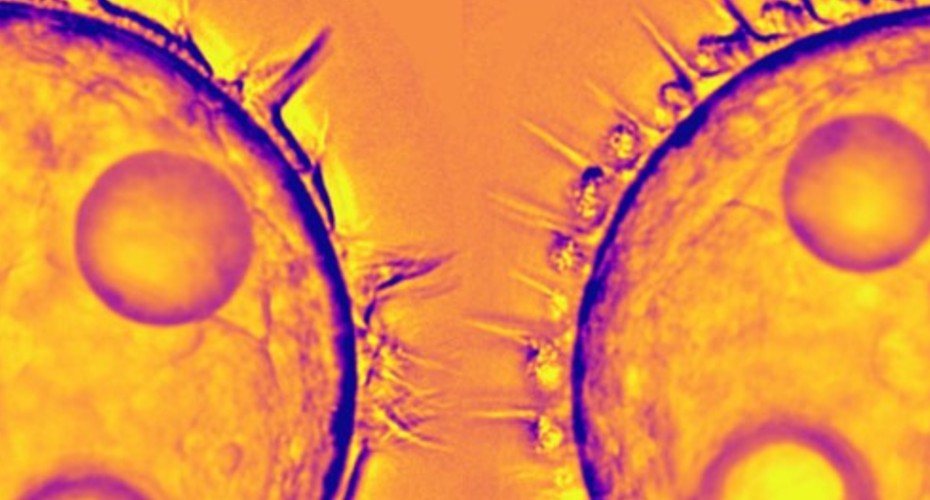How cilia choreograph their “Mexican wave”, enabling marine creatures to swim

Cilia under microscope, by Rebecca Poon & Kirsty Wan, University of Exeter
New research has unravelled the mystery of how microscopic cilia coordinate to move and propel marine creatures through water.
Cilia are tiny, hair-like protrusions found in many organisms, including humans and many aquatic animals. Almost all marine plankton have a life stage where they have cilia, which act like microscopic oars, fundamental to the organism’s ability to feed, move and disperse through water, avoid predators, and select suitable habitats.
Proper coordination of cilia is essential for the normal physiology of many organisms, from single cells to humans. Yet despite decades of research, the mechanisms of cilia coordination remain disputed. Scientists have particularly investigated how coordinated waves of activity known as metachronal waves occur, which are fundamental to moving the organism effectively. These patterns travel through the array of beating cilia like a Mexican wave through a crowd.
To address this question, a team at the University of Exeter studied the larvae of the marine rag worm Platynereis, selected for its spherical body shape with one single band of cilia, and a very simple nervous system. Their research, funded by the European Research Council (ERC) and Wellcome, and published in Science Advances, used whole-body high-speed imaging to examine the wave behaviour, and the effects of various physical and biological manipulations.
Their results reveal an unprecedented wave structure. Despite the illusion of a single wave travelling across the entire circle of the ciliary band, coordination is only present within individual cells, and the wave does not transmit across cell boundaries. For the first time, the research revealed that short-range ‘steric’ interactions, where cilia ‘bump into each other’, are crucial for maintaining coordination in these very densely packed cilia.
Professor Kirsty Wan, of the University of Exeter’s Living Systems Institute, led the research, and said: “Marine plankton form the basis of food webs. Cilia are crucial to their effective dispersal and ability to control their position within the water column – without them, marine ecosystem would break down. Using this unique model larva, we’ve discovered a new mechanism behind cilia’s ‘Mexican wave’, redefining our understanding of how they move and interact. We also found that the waves are surprisingly robust, meaning that the larvae can still swim when the ciliary band is damaged accidentally – a very clever feat of evolution and prime example of robustness in living organisms.”
The new paper is titled ‘Dynamics and emergence of metachronal waves in the ciliary band of a metazoan larva’ and is published in Science Advances.



